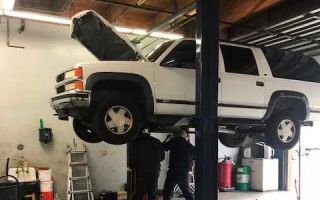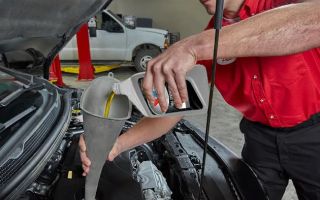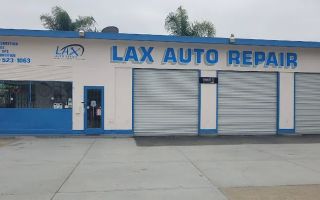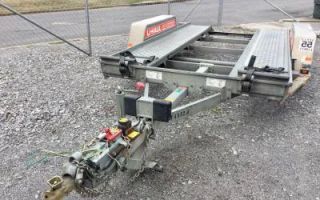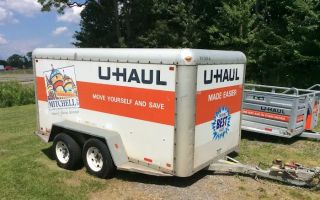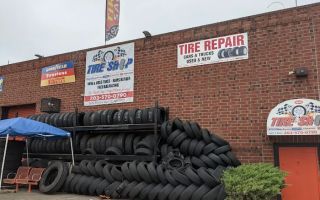How to Fix a Jumpstart Gone Wrong: A Step-by-Step Guide
There’s a good chance that at some point, you’ve tried to jumpstart a car with a dead battery. Jumpstarting a car can be a lifesaver when your vehicle refuses to start, but what happens when things go wrong? It can be frustrating, especially if you end up with more problems than you started with. I've been there before, and after some trial and error, I’ve learned a few things about how to fix a jumpstart gone wrong. Whether it’s improper connections, electrical surges, or battery issues, I’ll walk you through the steps to troubleshoot and resolve the situation.
1. The Importance of Understanding Jumpstarting
Before jumping into the steps on how to fix a jumpstart gone wrong, it’s crucial to understand how jumpstarting works in the first place. When your car's battery dies, you rely on another vehicle’s charged battery to provide the power needed to start your engine. The process involves using jumper cables to connect the two batteries, allowing the charged battery to send power to your car’s battery.
But here's the thing: jumping a car requires proper knowledge and technique. If the cables are connected incorrectly or there’s an issue with the electrical system, things can go awry, and what should be a simple fix can quickly turn into a headache.
2. The Risks of Jumpstarting a Car Incorrectly
While jumpstarting a car might seem like an easy task, there are some risks involved if not done properly. I once made the mistake of connecting the cables in the wrong order, and let me tell you, it didn’t end well. Here are some of the risks I learned the hard way:
2.1 Damaging the Car’s Electrical System
Improper connections can cause an electrical surge, which could damage your car's delicate electrical systems, including the alternator and fuses. When I mistakenly reversed the cables during one of my first attempts, I ended up with a blown fuse and a much bigger repair bill than I anticipated. Make sure you understand the correct order and sequence for connecting cables.
2.2 Battery Damage
Jumpstarting a car with a faulty or old battery can sometimes exacerbate the issue. If the dead battery has already been drained too far or is damaged, sending electrical current through it could cause it to leak or even explode in extreme cases. I once had a situation where I thought the battery was fine, but after jumpstarting, it started emitting fumes and had to be replaced immediately.
2.3 Getting Shocked
There’s also the risk of getting a mild shock if the jumper cables aren’t connected properly. While it’s rare for a person to get severely hurt, I learned that it's best to keep your hands and body clear of the connections when working with the cables to avoid electrical shocks.
3. What to Do When the Jumpstart Goes Wrong
If you find yourself in a situation where the jumpstart isn’t working as expected, don’t panic. I’ve been there, and while it’s frustrating, there are a few things you can do to troubleshoot and potentially fix the issue without calling in a professional right away.
3.1 Double-Check the Jumper Cable Connections
The first thing I always do is double-check the jumper cable connections. It’s essential to connect the cables in the right order to avoid any mishaps. The correct sequence is:
- Red (positive) cable to the dead battery’s positive terminal
- Red (positive) cable to the live battery’s positive terminal
- Black (negative) cable to the live battery’s negative terminal
- Black (negative) cable to a metal, unpainted part of the engine block on the dead car
By connecting the negative cable to a metal part of the engine (away from the battery), you reduce the risk of sparks near the battery, which could lead to an explosion. If you’re unsure, go back and retrace your steps to ensure everything is connected properly. This has saved me from a few jumpstart blunders in the past.
3.2 Wait a Few Minutes
If the connections seem correct, but the car still won’t start, wait for a few minutes to allow the live battery to charge the dead one. Sometimes, the dead battery just needs a little more time to build up enough power. I’ve found that leaving the cables connected for about 5–10 minutes can often give the battery the boost it needs. After waiting, try starting the engine again.
3.3 Check the Battery Voltage
If you’ve connected the cables correctly and waited a few minutes with no success, the issue could be a dead or faulty battery. Use a multimeter to check the voltage on both batteries. A healthy car battery should read around 12.6 volts. If the dead battery reads less than 12 volts even after waiting for a charge, it may need to be replaced. I once had a similar experience when my battery’s charge dropped below 9 volts, and a new battery was the only solution.
3.4 Inspect the Alternator
Another potential issue is a malfunctioning alternator. If the alternator isn’t working properly, it won’t recharge the battery when the car is running, causing the battery to drain even after a jumpstart. A quick check of the alternator’s output can help diagnose the problem. If you notice that the alternator isn’t generating the correct voltage, it could be the reason the jumpstart failed. In my case, I had to replace my alternator after troubleshooting, and it solved the issue permanently.
4. When to Call for Professional Help
While many jumpstart problems can be resolved with a bit of patience and troubleshooting, there are times when professional help is needed. If you’ve double-checked everything and still can’t get the car started, it might be time to call in a towing service or roadside assistance. I had to do this once when my car’s battery refused to hold a charge, and the breakdown service was a lifesaver.
If you’re stranded on the side of the road and can't get your car started, a reliable towing service like Rescue & Towing can get you back on track. Their fast response time and experienced staff will ensure your car is safely towed to a repair shop where the issue can be addressed. Whether it's a dead battery, faulty alternator, or something else, professional assistance is a great solution when you're stuck.
5. Real-Life Example: A Jumpstart Gone Wrong
Let me share a personal experience. A few months ago, I was out running errands when my car wouldn’t start. It had been a cold morning, so I assumed the battery was dead. I used jumper cables to jumpstart it, but when I turned the key, nothing happened. At first, I thought I hadn’t connected the cables properly, so I double-checked everything. But after a few attempts, I realized my alternator wasn’t charging the battery properly.
Frustrated, I called for roadside assistance, and the technician arrived within 30 minutes. After a quick inspection, he confirmed that my alternator had failed, and the car was towed to a nearby repair shop. It was a costly repair, but the towing service saved me time and frustration.
6. Conclusion: Fixing a Jumpstart Gone Wrong
While jumpstarting a car is a relatively simple task, things can go wrong if you’re not careful. From incorrect connections to faulty batteries or alternators, troubleshooting a jumpstart issue requires a little knowledge and patience. If you’re unable to fix the issue yourself, don’t hesitate to call for professional help. A reliable towing service like Rescue & Towing can quickly assist in getting your car to a safe place where the issue can be properly addressed. They offer 24/7 roadside assistance, ensuring that you’re never stranded for long.


